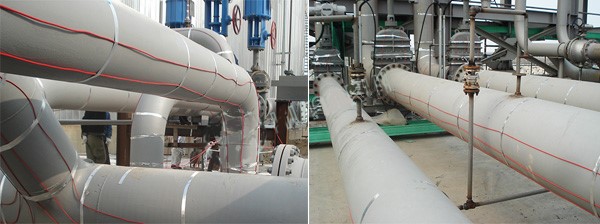When users are exposed to electric heating products, they will hear about working temperature and heat resistance temperature.
However, since they are not familiar with electric heating products, they do not know the difference between these two parameters.
Here we will introduce the difference between working temperature and heat resistance temperature of electric heating products.
Actual picture of electric heating products installed on the pipeline
Working temperature of electric heating
refers to how much temperature the electric heating belt can reach? That is, the degree to which the temperature can reach.
For example: the working temperature of low-temperature electric heating belt is 65℃, which is the boundary point of the temperature of the electric heating belt. When it reaches 65℃, it will not rise further.
Heat resistance temperature of electric heating
refers to the heat resistance of the electric heating belt material, and how much temperature environment it can be exposed to for normal operation.
For example: heat resistance: 205℃, indicating that in an ambient temperature of 205℃ or below, the electric heating belt material will not undergo chemical or physical changes.
After the above explanation, users can basically understand the difference between these two parameters.
The heat resistance temperature indicates the temperature it can withstand; the working temperature indicates the value of how much temperature the electric heating belt can reach.
If a user needs to reach a precise temperature, he can use temperature control to control the temperature.
Please feel free to contact us for further information on heating cable wire.
sales5@lifetimecables.com
Tel/Wechat/Whatsapp:+86 19195666830
Post time: Jul-12-2024





